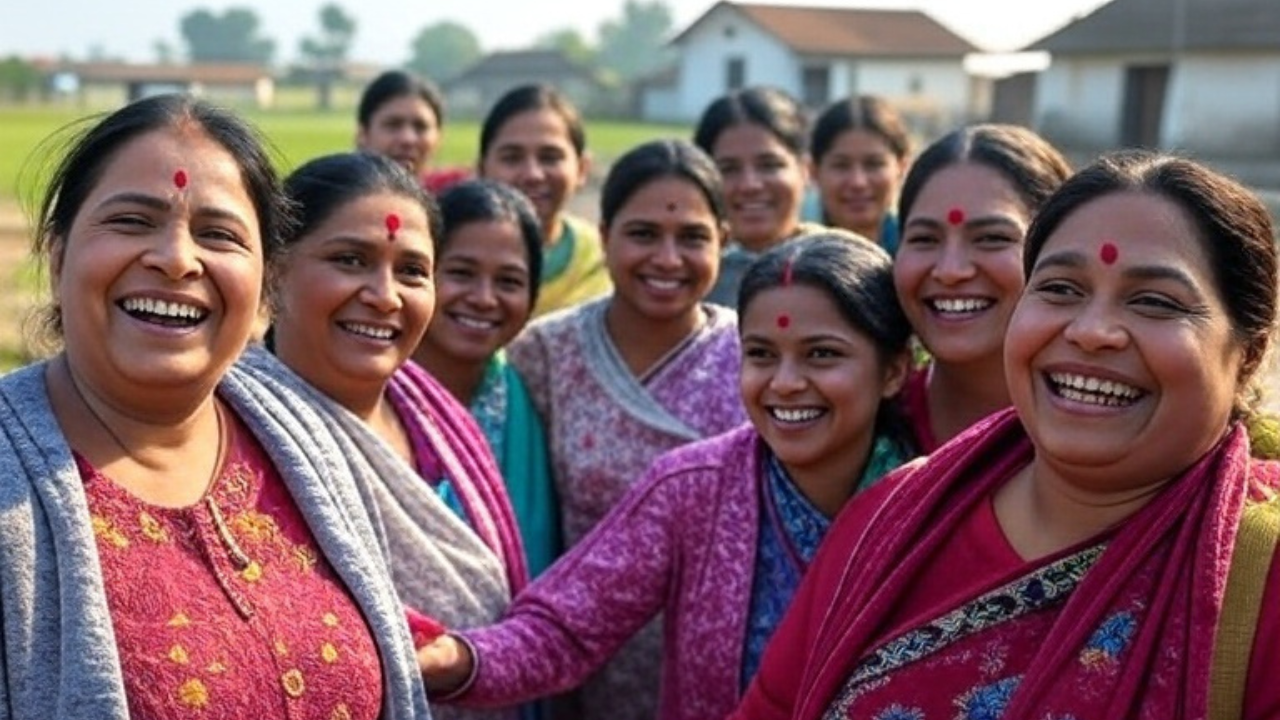
From hand-out to hand-up: Why Bihar’s direct transfer scheme is an economic game-changer
On September 26, 2025 a sort financial revolution quietly unfolded in Bihar. Nearly 7.5 million women, cutting across caste and community, found Rs 10,000 deposited into their bank accounts. The transfer — rolled out under the Mukhyamantri Mahila Rojgar Yojana and launched publicly by the prime minister. The goal is audacious: to promote economic self-reliance among women and stimulate the rural economy.
Yet, as expected, the chorus of scepticism has begun. Opponents cry foul over the timing, ahead of assembly elections in the state, while intellectuals cynically question whether such a direct infusion of cash can truly produce a “Keynesian multiplier” effect on the economy.
But the most persistent, almost primal, fear is this: Will this unearned money make people lazy? This concern is rooted in a long-standing economic principle: standard models suggest that receiving ‘unearned income’ will rationally lead people to reduce their labour supply in favour of increased leisure time (the classic ‘income effect’). This worry is not new. It is the foundation of a centuries-old economic orthodoxy. Standard economic models predict a clear “income effect”: If you are given money for nothing, you will rationally choose to consume more leisure, working less.

Policymakers worldwide imagine a trade-off between transfer size and work hours, the worry is that welfare will crowd out effort. Furthermore, behavioural economists add a nuanced twist: the cash might be so tempting that people forego the long-term gains of skill-building for short-term relaxation. The implication is that handouts create dependency, stifling the very initiative they aim to foster.
Nonetheless, there is only one problem: the real-world evidence refuses to cooperate.
A comprehensive body of research, including randomised controlled trials (RCTs) from seven cash-transfer programs across six countries, has found a startling lack of evidence for this laziness effect. The recipients of cash were no less likely to work, and put in just as many hours, as those who didn’t receive it. These surprising results were reinforced by a seminal 2024 paper from the NBER, which analysed data from middle- and low-income countries. Far from killing motivation, the transfers, on average, led to a small but significant increase in labour-force participation and days worked.
So, if the textbook models are wrong, what is actually happening?
The answer lies in understanding the profound difference between being rich and being poor. The standard logic, that more wealth means more leisure, applies to those who are already above a certain economic threshold. For them, an extra rupee might indeed buy a nicer vacation. But for the poor, an infusion of capital is not a ticket to idleness; it is a key that unlocks economic potential.
For a woman in rural Bihar, Rs 10,000 is not “leisure money”; it is seed capital. It is the means to buy a sewing machine, freeing her from daily wage labour and turning her into a tailor. It is the capital to purchase a small herd of goats, transforming her from an agricultural labourer into a livestock owner. It is the fertiliser that makes a small plot of land productive, requiring more work, not less. This is the “substitution effect” overpowering the “income effect”: the cash makes work more productive and profitable, thereby encouraging more of it.
Moreover, economics cannot be divorced from psychology. Chronic poverty is not just a state of wallet; it is a state of mind. It breeds despondency and panic, which are paralysing. The certainty of a cash transfer can alleviate this existential anxiety. It provides a safety net that makes calculated risks, like starting a small business or investing in a new skill, seem possible. Being a little less poor can reduce the mental burden of scarcity, freeing up cognitive resources to plan, invest, and strive. It doesn’t make people lazy; it makes them hopeful and capable of pursuing longer-term goals.
The criticism of Bihar’s scheme on the grounds of creating dependency is, therefore, based on an economic model that does not reflect the realities of the poor. The true genius of direct cash transfers is their simplicity and trust. They empower individuals to make the best economic decisions for their own specific circumstances, bypassing the inefficiency and corruption of traditional, in-kind aid.
For Bihar’s Rs 10,000 initiative to lead to lasting, sustainable improvements and long-term livelihoods, the key lies in the follow-through. This means providing the necessary markets, services, and governance that can transform this small sum into enduring returns. The two practical prescriptions follow.
First, treat the cash as the first step in a larger ecosystem: couple transfers with accessible microcredit, affordable inputs (seeds, fertilizer, tools), and optional business-skills training. Evidence shows complements — not patronising — multiply impact.
Second, measure and evaluate. A programme of this scale is an ideal candidate for rigorous monitoring: outcome tracking and, where feasible, randomized phasing can tell us whether assets are being bought, whether enterprises scale, and how labour patterns evolve. That learning is as valuable as the transfers themselves.
Disclaimer
Views expressed above are the author’s own.
END OF ARTICLE